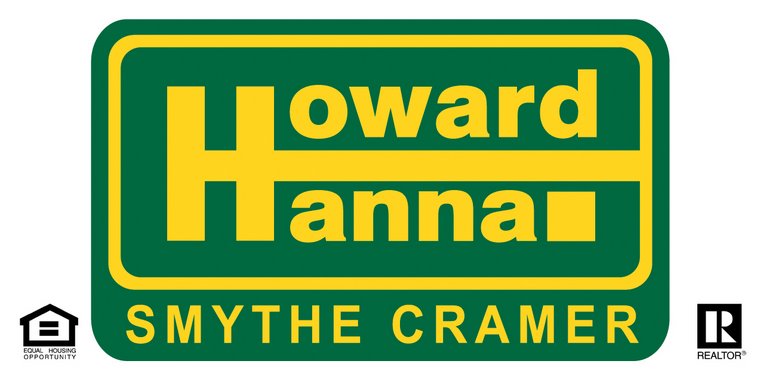Tax Abatement: Does it Help More Than it Hurts the City of Cleveland?
The City of Cleveland authorized a Tax Abatement Program for new construction and rehab projects in 1991. 100% tax abatement on a 'for sale' property has been alluring to buyers, something I have seen first hand. In 2006 I had several clients move here from other States and they specifically chose homes that included the 100% abatement over others that were similar but lacked the tax relief. The question comes up for debate again because City authority for this Abatement Program ends this July; they have to decide if they are going to continue it, change it or end it.
City Council is holding a series of hearings on the issue. Last week's hearing brought out some of the prominent builders in the area. Developers like Sutton Builders, Rysar Properties, Zaremba and The Ferchill Group all asked the City to continue the Abatement Program. I thought the most telling comment came from Chris Ferchill of The Ferchill Group. The Ferchill Group developed The Villa Carabelli Town Homes which occupy space in both Cleveland and Cleveland Heights. He pointed out that "....the six units within City of Cleveland limits sold quickly [and they had 100% tax abatement for 15 years]. ...the fourteen units in Cleveland Heights took two years to sell...." and the tax abatement for those units was 65% for 7 years. (quote is from the Crain's article linked above)
Councilwoman Fannie Lewis discussed the fact that tax abatement had helped turn her neighborhood around (although Fannie Lewis deserves a lot of credit herself, she is a dynamo for her neighborhood, IMHO). And Councilman Cummins from the Old Brooklyn neighborhood pointed out that his area doesn't have much land to assemble for new construction projects, but that rehabbed and new homes on vacant lots should get 12 % abatement. This discussion, regarding whether or not the abatement amount should change, was a key part of the hearing. Overall it sounds like the majority of the builders requested that The City give them a year at the status quo while they rethink a strategy.
Personally and professionally, I see the advantages of tax abatement, and stories like Fannie Lewis' tell me we need to keep some form of it. But the City of Cleveland is losing money on the type of abatement structure set up currently. It was necessary, but now I'm thinking a change in focus might be good. Why not apply the total 100%/15 year tax abatement to Smart Growth rehabs or new builds; or homes that are built near public transportation (TOD's)? Or reach a certain level of energy efficiency? Other layers of abatement could still be applied but at smaller percentages for different types of rehab projects. The storefront abatement program seems like a winner to me too. I would tell you to keep an eye on the City Council website for information on more public hearings, but I will have to call on Monday to find out -- the City Council website seems to be in 'reconstruction' mode this week. I will edit this or add a short blurb in a new post when I find out details. Peace Out - 3C
City Council is holding a series of hearings on the issue. Last week's hearing brought out some of the prominent builders in the area. Developers like Sutton Builders, Rysar Properties, Zaremba and The Ferchill Group all asked the City to continue the Abatement Program. I thought the most telling comment came from Chris Ferchill of The Ferchill Group. The Ferchill Group developed The Villa Carabelli Town Homes which occupy space in both Cleveland and Cleveland Heights. He pointed out that "....the six units within City of Cleveland limits sold quickly [and they had 100% tax abatement for 15 years]. ...the fourteen units in Cleveland Heights took two years to sell...." and the tax abatement for those units was 65% for 7 years. (quote is from the Crain's article linked above)
Councilwoman Fannie Lewis discussed the fact that tax abatement had helped turn her neighborhood around (although Fannie Lewis deserves a lot of credit herself, she is a dynamo for her neighborhood, IMHO). And Councilman Cummins from the Old Brooklyn neighborhood pointed out that his area doesn't have much land to assemble for new construction projects, but that rehabbed and new homes on vacant lots should get 12 % abatement. This discussion, regarding whether or not the abatement amount should change, was a key part of the hearing. Overall it sounds like the majority of the builders requested that The City give them a year at the status quo while they rethink a strategy.
Personally and professionally, I see the advantages of tax abatement, and stories like Fannie Lewis' tell me we need to keep some form of it. But the City of Cleveland is losing money on the type of abatement structure set up currently. It was necessary, but now I'm thinking a change in focus might be good. Why not apply the total 100%/15 year tax abatement to Smart Growth rehabs or new builds; or homes that are built near public transportation (TOD's)? Or reach a certain level of energy efficiency? Other layers of abatement could still be applied but at smaller percentages for different types of rehab projects. The storefront abatement program seems like a winner to me too. I would tell you to keep an eye on the City Council website for information on more public hearings, but I will have to call on Monday to find out -- the City Council website seems to be in 'reconstruction' mode this week. I will edit this or add a short blurb in a new post when I find out details. Peace Out - 3C
2/27/07 - I have an update - Cleveland State University did a study involving 400 homebuyers who purchased homes in Cleveland over the last few years. The majority of them (60%) said tax abatement was a big reason they chose Cleveland over someplace else. I think that's great, it just proves abatement works. What it does not do however is prove it should stay in the same form it is in right now. Regardless, here is the Crain's Cleveland Business article in it's entirety.







No comments:
Post a Comment